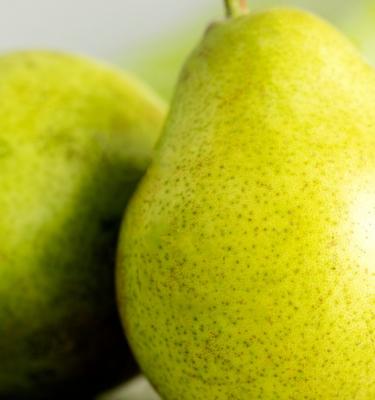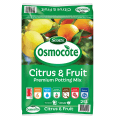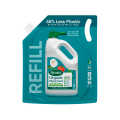

How to grow & care for pear trees
Pear trees love a garden with cool winters, but if you choose the right variety (with ‘low chill’ requirements) you can grow pear in warm and subtropical regions of Australia too.
Pear trees are long lived and productive and depending on the variety, your pear tree can reach up to 4 metres tall and 2-4 metres wide. For small spaces or to grow in large pots look for dwarf or grafted pear varieties that will grow to 2.5 metres or less.
Pears are deciduous trees, losing their leaves in winter and blossoming in spring, with fruit developing over summer - ready for harvest from mid-summer to early winter depending on the variety.
Some varieties of pear will need a second tree for pollination, but if you don’t have the space for 2 trees look for a self-fertile (or self-pollinating) variety - there are many to choose from!
Top 5 steps to growing pear
- Choose a full sun position in your garden or grow a dwarf pear variety in a large pot.
- Look for a self-fertile variety unless you have the space for 2 or more trees.
- Netting pear trees is essential to protect your crop from birds.
- Pears are ready to harvest in late summer, autumn or winter depending on the variety.
- Research the best pear varieties for your climate, some varieties will tolerate warmer winters while others need a certain number of days below 8 degrees Celsius before they will fruit.
Shopping List
- Bare-rooted or potted pear tree
- Scotts Osmocote Compost Premium Soil Improver
- Scotts Osmocote Plus Organics Citrus & Fruit Plant Food & Soil Improver
- If growing in pots, Scotts Osmocote Citrus & Fruit Potting Mix
- Garden spade
- Mulch
- Secateurs
- Wildlife safe crop protection netting
Prepare
Pear trees prefer a full sun spot in a well drained soil, that’s protected from high winds. They will require regular watering or irrigation when fruiting - so make sure they are either on an irrigation system or close to a tap for easy watering.
Prepare the soil for planting by digging a hole that’s twice as wide as the root ball of your tree and the same depth. Loosen the soil at the bottom of the hole and mix Scotts Osmocote Compost Premium Soil Improver through the original soil.
Planting in the garden
Growing from bare-rooted or potted trees
Bare-rooted pear trees can be purchased and planted in winter when the trees are dormant. Potting pears can be planted at any time, except in the heat of summer.
Plant your pear tree at the same depth it was in the pot or if bare-rooted make sure any graft on the truck is well above the soil surface. Add a stake to support bare-rooted trees at planting - this can be removed once the roots have taken.
Firm down the soil around the roots of your newly planted pear tree and water in well. Top dress around the tree with mulch (but avoid touching the trunk) to suppress weeds and retain moisture.
Planting in pots
You can grow pear trees in large pots or containers so long as they have good drainage. An old half wine barrel with drainage holes added is an ideal size. Fill your pot with a premium potting mix like Scotts Osmocote Citrus & Fruit Potting Mix before planting your bare-rooted or potted pear tree.
Firm down the soil around your newly planted pear tree in the pot and water it in well to settle its roots in nicely.
Mulch the top of the soil in the pot to retain moisture and ensure the pot can be easily watered during the summer months.
Espaliered pear trees are fantastic space savers and grow well in pots or narrow garden planters. You can either purchase an established espaliered tree or train your young tree to grow flat along a trellis.
Harvest
Pears are ready to harvest anywhere from January to June - depending on the variety you’ve planted and your climatic zone. The seeds inside a ready to pick pear will be dark brown or black, but the flesh will still be crisp and crunchy. If you prefer soft pears, leave the crisp pears on your kitchen bench to soften over a few days.
You’ll need to securely net your trees to protect the crop from hungry birds and other animals - including Queensland Fruit Fly. Once the baby pears are formed use a wildlife safe, 4mm hole or smaller white netting that’s pulled tightly over the tree and secured around the truck or set up a frame structure over the tree so you can easily place the net over this.
Prune pear trees after harvesting to keep their shape and to a manageable height. Very tall trees will be hard to net from and you risk losing your crop to pest animals and insects.
Pests & Diseases & General Care Advice
Established pear trees should be pruned in winter once the fruit has been harvested to an open vase shape - remember pears fruit on and fertilised in spring and again in autumn with Scotts Performance Naturals Citrus & Fruit Organic Based Fertiliser.
Aphids and caterpillars can be controlled with a spray of Defender Pyrethrum Insect Spray if needed.



